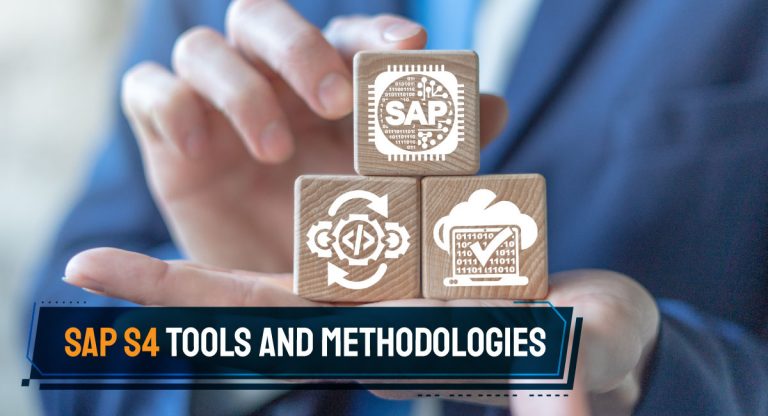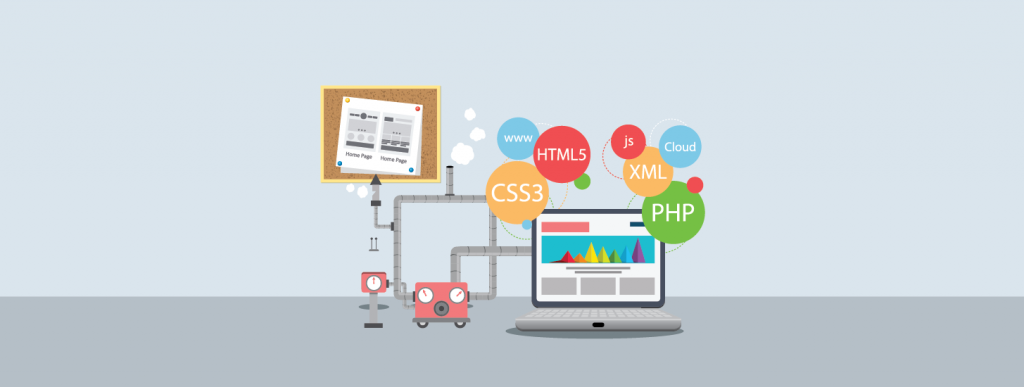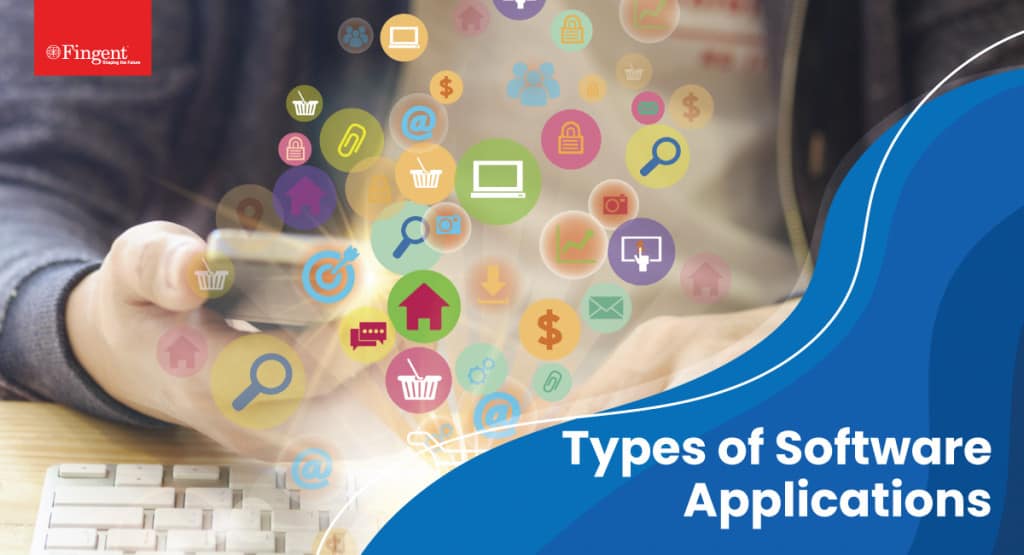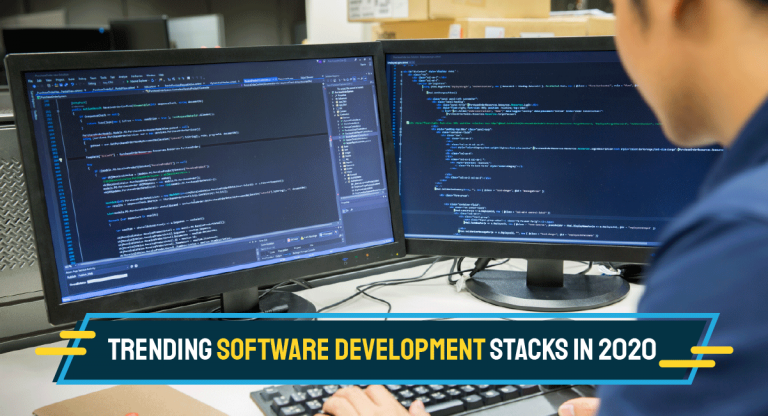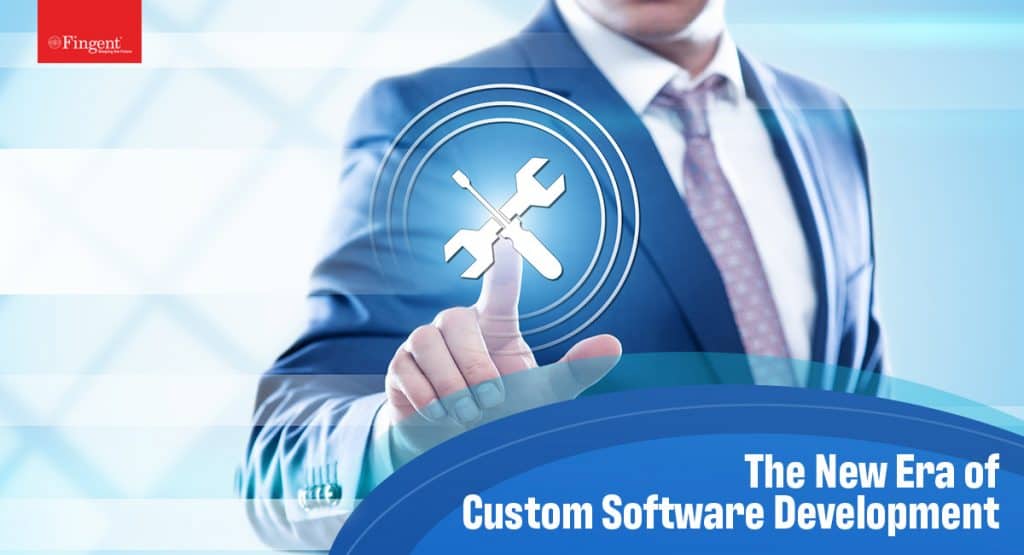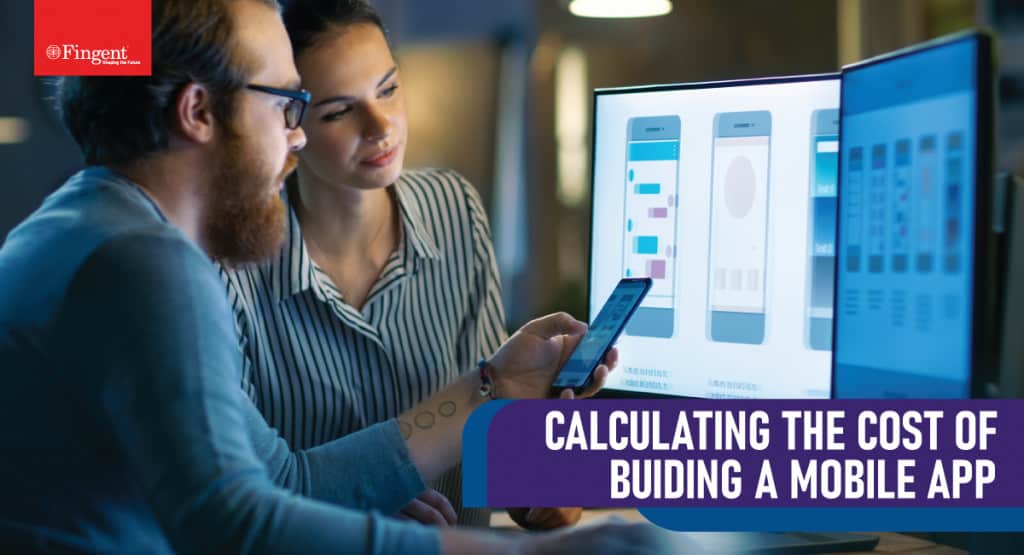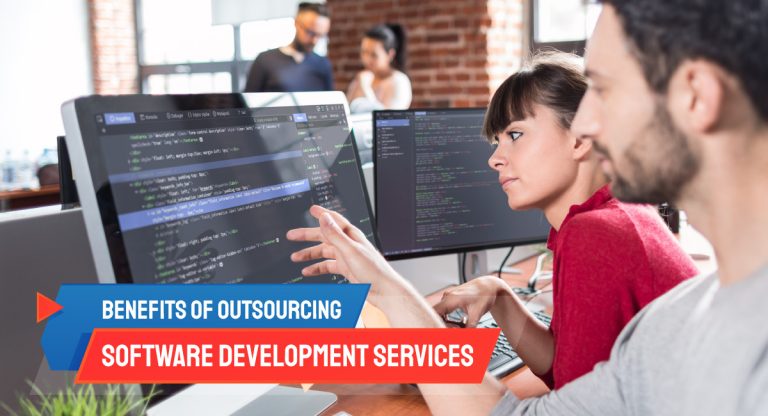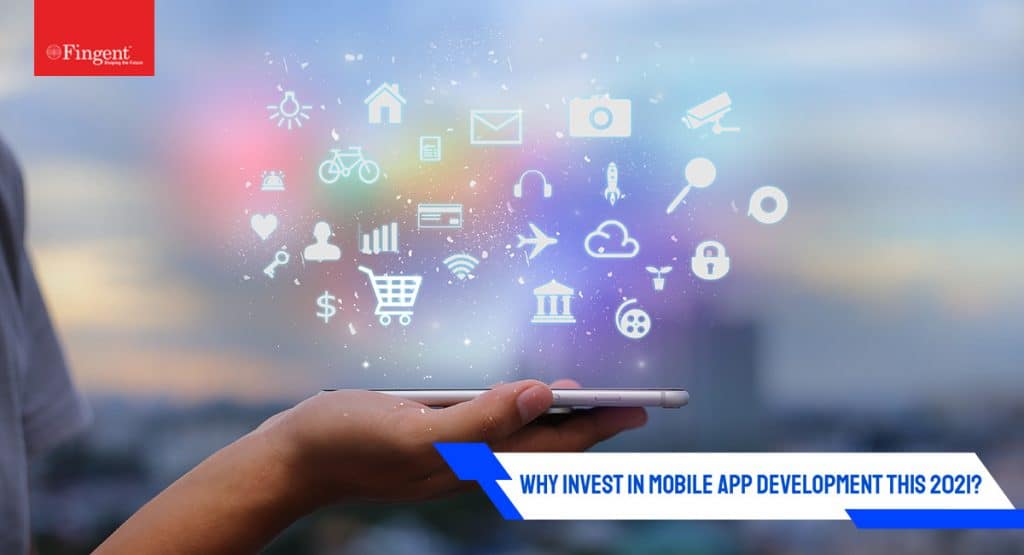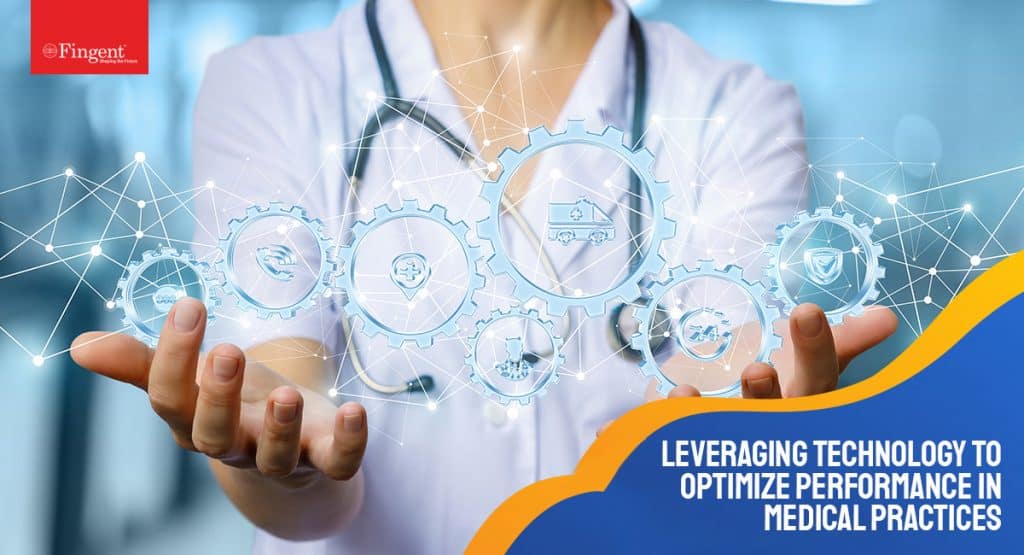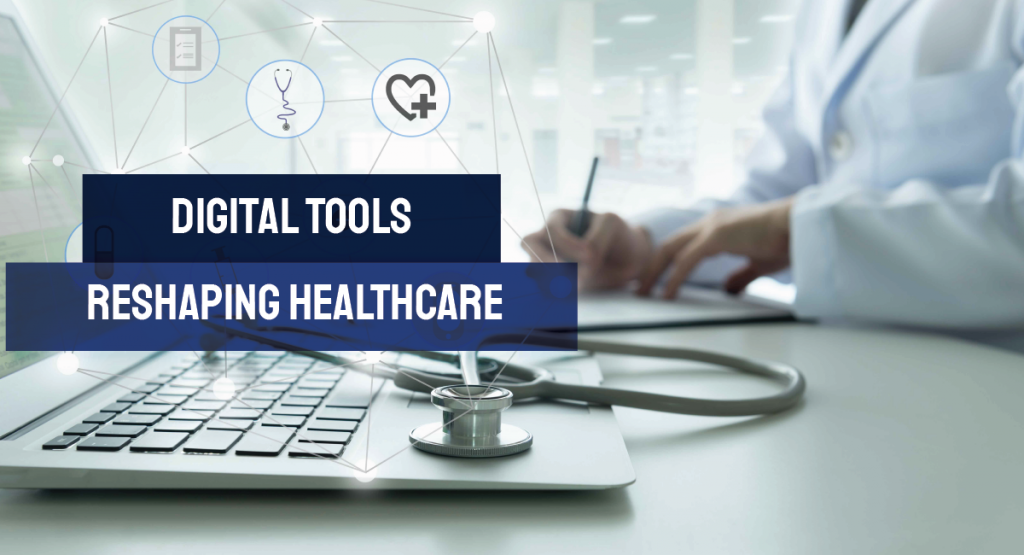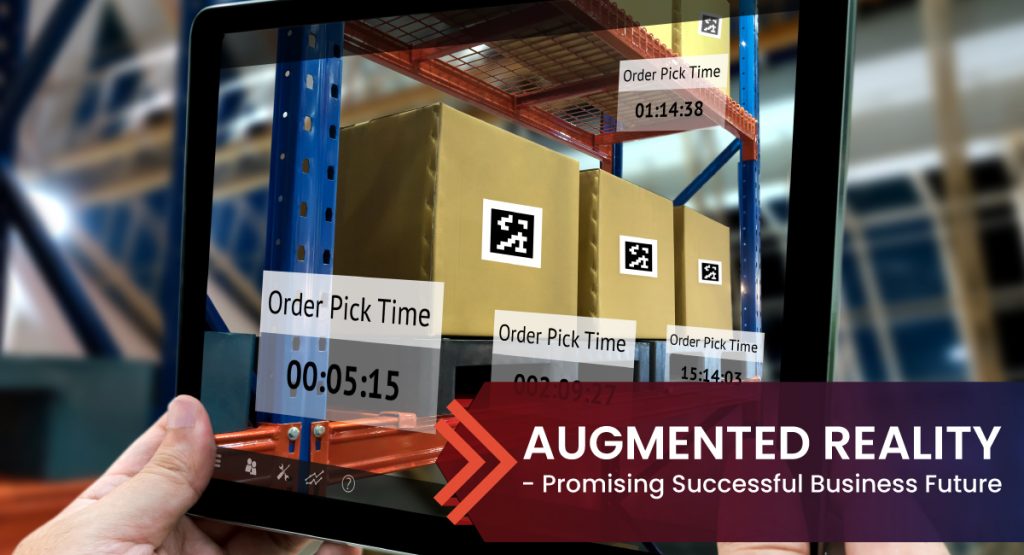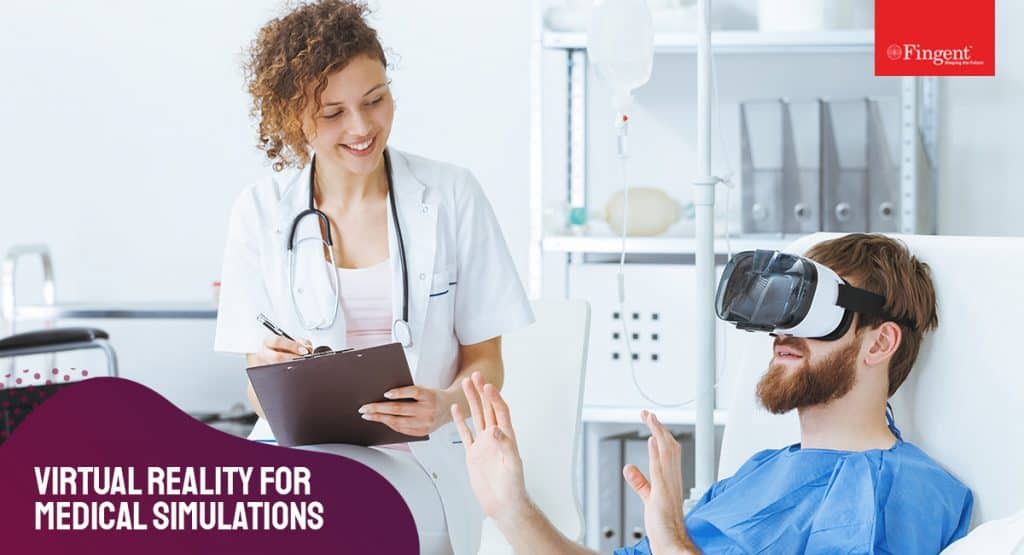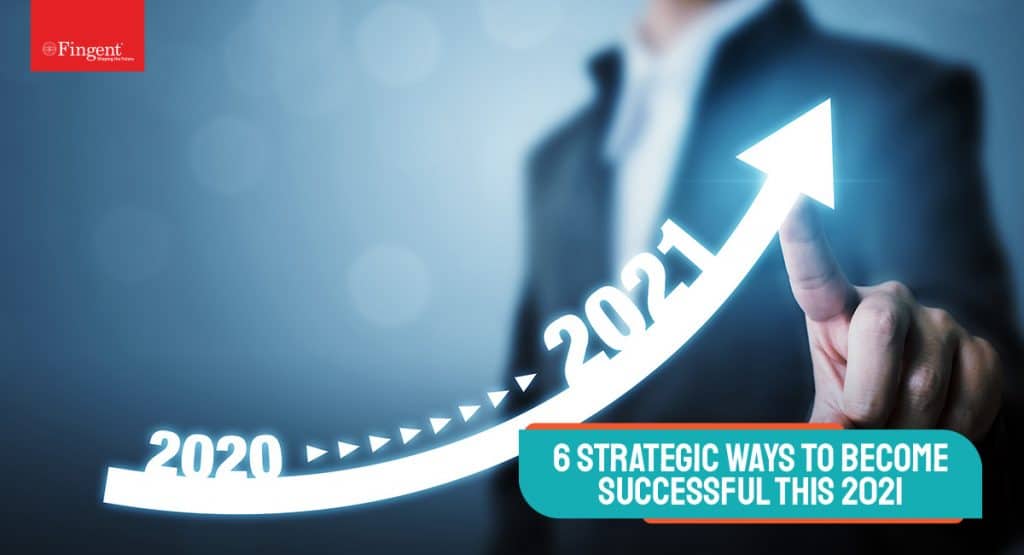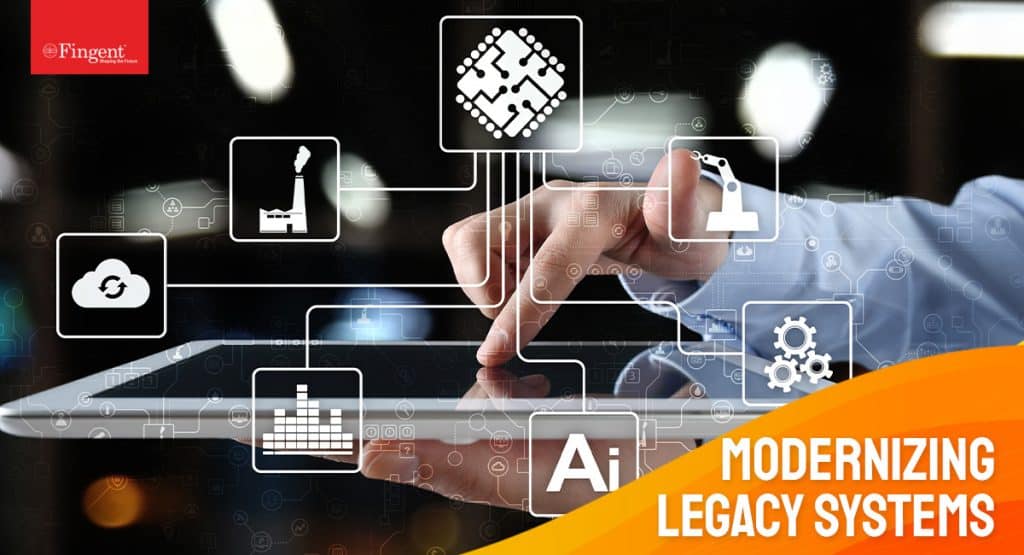Category: Digital Transformation
3D Web Configurator Tech: Run Your Home Improvement Business Safely During The Pandemic
COVID-19 pandemic’s impact has ushered in a dramatic shift in the behavior and preference of customers. However, this shift was not restricted to customers alone. Social distancing and isolation protocols put industries like home improvement in a state of dilemma, as their business depends highly on showcasing products to customers in a physical space, preferably in-store. Almost overnight, businesses like interior designs and home decor had to adapt and adjust how they presented their products. Today, home improvement companies are increasingly relying on 3D web configuration technology to ensure that their customers gain personalized product experiences and can shop from the comfort of their quarantined couches.
Forbes reports that by replacing static 2D images with interactive 3D models, businesses have gained a 40% increase in online conversion rates and a 30% improvement in average sales prices. Moreover, they also managed to reduce online returns by 80%.
As a customer begins experiencing the ease, personalization, and speed of online shopping, there is no going back. Businesses can leverage this cemented habit when they use a 3D web configurator. In the world of e-commerce, 3D web configurators are already a breakthrough. Unquestionably, it is the need of the hour!
Like e-commerce, the home improvement industry is also a crucial beneficiary of 3D web configuration. This article discusses how the home improvement industry uses 3D web configurators to enhance customer engagement and accelerate business growth.
How the Home Improvement Industry is Utilizing 3D Web Configuration
According to Statista, the projected total home improvement sales in the United States will touch 510 billion USD by 2024. Such an exponential increase is only made possible by the power of 3D web configurators. From sofas to paints and bathroom essentials like faucets and sinks, there are various configurations available today.
3D visualization software can help customers project a 3D model of the product against the background of any room. This does not mean a customer must invest in special equipment. Instead, they can view using their phone camera.
For instance, if a customer wants to see how a beige wardrobe would appear in their bedroom, they can simply point the phone camera and project that wardrobe onto the background. Plus, a 3D configurator allows customers to customize the product before they click on the “purchase” tab. So it is no surprise that 3D visualization software can build your customer’s confidence in their purchase.
Read more: What are 3D Web Configurators? How do they Boost E-Commerce Sales and Drive Customer Satisfaction?
3 Ways 3D Visualization Helps the Home Improvement Industry Thrive
3D visualization gives your customers an overall impression of their living room. It can provide an in-depth view of both real and surreal aspects. In other words, it will help you increase professional accuracy as you incorporate your customer’s requirements.
Here are the three advantages that 3D visualization can bring to the home improvement industry:
1. Color Match
Most people tend to research products online before buying. Besides, homeowners prefer to select their wall color from the comfort of their homes. An excellent 3D configurator case that can influence a consumer to move from the consideration stage to the purchase stage is Dulux. Using 3D visualization helped them to provide a better user experience across various channels and devices. In addition, it benefits both the customer and the consultant as they can pick and choose from all available colors.
The primary goal of 3D configuration is to help customers visualize how they can decorate their homes using various combinations. It generates accurate visualization of the selected paint on the walls and ceilings. Plus, it allows a shopper to import, tweak, process, view, and save the final visualization. This is an excellent feature for tradespeople and DIY renovation enthusiasts as they spruce up their homes.
2. Engaging Visualization
Home improvement businesses can use 3D configurators to educate customers about their products. It enables them to blur the lines between the consideration stage and point-of-sale decision-making. For example, 3D web configuration technology will let shoppers measure what size of furniture would look best in their living room. Once they decide on the size, the configurator could narrow it down to other furniture features and help customers make purchase decisions.
A 3D web configurator can do more than sell a product. It enables a business to be transparent and open about its products in detail. This assures the potential customer and increases decision-making comfort whether they commit to buying or not.
When customers cannot visit a store in person, they may want to inspect the purchase in detail. Having 4k zoom on your product page allows your visitors to scrutinize your products, feel the texture, and choose the right shade of color. This can be made easy when you add 360-degree images. Interactive 3D models can significantly improve your web session duration.
Typical case: Timothy Oulton
Timothy Oulton is a British handcrafted leather furniture brand. From 360-degree views to detail shots, it uses various 3D configuration features to create an engaging product page experience.
3. Interactive Imagery
With more people shopping online, having a 3D interactive website has become increasingly important. It can give your shoppers a degree of interactive imagery that photographs cannot render. You can achieve this by combining the background and the product to create an in-context image. Those combinations will help you convey a certain quality, tone, or mood that will influence a shopper’s perception of your product.
True, you can have multi-angled images, but you cannot rotate them. However, 3D product rendering enables immersive interaction between the customer and your product. Now, a shopper can rotate, enlarge, or shrink the product to view it from all directions. Such context enables shoppers to visualize how your product looks in a real-life setting.
Typical case: Neptune
A British interior design and lifestyle brand, Neptune, designs and creates furniture, lighting, and accessories for the entire home. They use context images to tell a story. Their product pages are filled with high-quality room scenes that highlight the beauty of their products.
Tangible Results of Implementing 3D Web Configurators
3D rendering is a distinctive way to present your home improvement products to your customers. It is less expensive in part because it can be used throughout the process of design and sale. Plus, it nudges them along in their buying decisions.
3D web configurators can help increase your customer engagement, boost online sales, and reduce returns. Thus, more businesses are likely to embrace the power of 3D configuration to ensure business continuity during the pandemic and beyond. So, yes, product visualization is the new reality of the future. But, are you ready for it? If your answer is yes, get in touch with us at Fingent and help us give you a 3D view of your business’s success!
Stay up to date on what's new

Featured Blogs
Stay up to date on
what's new



Talk To Our Experts
Streamlining SAP S/4HANA Migration with Selective Data Transition
Though the COVID-19 pandemic accelerates digital adoption among industries, the journey towards Intelligent Enterprise can be complex. Typically, this begins with establishing an intelligent core like SAP ERP. However, even migrating to a new system is more than just a simple upgrade for many companies. With several years of historical business data across complex system landscapes, companies will have to adopt a specific migration approach to SAP S/4HANA. A well-defined migration approach will help businesses ensure business continuity, embrace innovation, and stay relevant and competitive. This post will look at SAP S/4HANA Selective Data Transition Engagement and how this approach accelerates SAP S/4HANA migration.
Read more: Deploying SAP S/4HANA: Tools and Methodologies to Adopt
Two Popular SAP S/4HANA Migration Methods
There are two popular methods to manage SAP S/4HANA migration.
1. Greenfield migration
The first option is the Greenfield approach or a complete re-engineering (new implementation). However, the limitation of this approach is that you cannot migrate your historical data and so cannot take advantage of the latest intelligent features you need for your company’s historical data to work.
2. Brownfield migration
The second option is the Brownfield approach that allows migrating high volumes of historical data (system conversion). However, moving a vast amount of historical data could leave you with more data that could be non-compliant with data privacy laws. Also, this approach could leave you with a lot of irrelevant data in your newly configured system.
As both these options offer certain limitations, SAP formed a brand-new approach, the SAP S/4HANA Selective Data Transition Engagement, that makes your data migration to SAP S/4HANA a lot easier.
What is Selective Data Transition?
Selective Data Transition, also known as Hybrid Approach or Landscape Transformation, is an alternative to the New Implementation approach (Greenfield) or System Conversion approach (Brownfield). It allows you to consolidate several ERP systems to one central SAP S/4 HANA system. Selective Data Transition is vital for companies moving from an existing SAP ERP solution to SAP S/4HANA on-premise or SAP S/4 HANA cloud (private edition).
Just like an inland river delta flowing into the ocean, Selective Data Transition allows you to migrate only a relevant selection of your existing ERP data to SAP S/4 HANA. So, if you’re on SAP ECC planning for transition to SAP S/4HANA, then selective data transition is one of the best approaches to move to SAP S/4HANA.
Case Study: Thermo Pads partners with Fingent to migrate from ECC 6 to SAP S/4HANA. View Case Study
Business Benefits of Selective Data Transition Approach
- Selective data transition avoids business disruption when moving to SAP S/4HANA and enables you to go live according to your business needs. In general, this approach allows for a single go-live, moving several organizational units or roll-out in multiple phases, for example, by country.
- This approach enables you to migrate only your relevant historical data and retain a consistent process chain while leaving behind obsolete data, for example, outdated company codes.
- Selective data transition helps you define your speed and combine single projects such as a new go-live implementation, finance management, etc. while moving to SAP S/4HANA in a single step or a phased approach.
- With SAP S/4 HANA, you can introduce new business processes and manage your historical data while protecting good practices and previous investments.
- The near-zero downtime approach restricts the technical downtime to just a few hours.
- Selective data transition can help change your landscape by either splitting or consolidating existing systems.
Read more: 7 Tips to Ensure a Seamless Transition to SAP S/4HANA
Customize Your Selective Data Transition Approach with Fingent
Selective Data Transition Engagement is a great way to balance between redesign and reuse. It can happen across various scenarios for companies of different sizes to support a smooth transition to SAP S/4HANA. This approach provides a suitable IT landscape for every company’s unique needs. Selective data transition goes beyond the standard implementation as it offers several options for customers to choose from, based on their current landscapes and future needs.
You can work with Fingent and define the appropriate structural changes that need to be considered during data migration, along with any business processes that may need to be modified or redesigned. Our tailored approach has helped many of our customers to increase their flexibility to adapt data and processes in just one step.
Read more: SAP S/4HANA journey: 8 ways C-level leaders and executives can derive business value
With Selective Data Transition Engagement, companies can even take advantage of select innovation and modify their business processes to facilitate the use of the latest tools and functionality without the need to start from scratch.Companies having mature SAP landscapes can clean up their environments while retaining those investments that matter most and lower their transitions by bypassing preparation projects.
Selective data transition can even help split some of your projects between the cloud and on-premise. It also allows you to restructure and consolidate your environments as you want. But, most importantly, this approach helps you save time by combining all tasks in just one step.
Read more: 6 capabilities of SAP S/4HANA that will help you become an intelligent enterprise
So, if you are interested in learning how the SAP S/4HANA Selective Data Transition Engagement can help your organization accomplish successful migration, don’t hesitate to contact Fingent. We are an SAP Silver Partner and have the expertise in this area to expedite your intelligent enterprise journey.
Stay up to date on what's new

Featured Blogs
Stay up to date on
what's new



Talk To Our Experts
A comprehensive guide to web application development in 2021
- Introduction
- What is a Web Application?
- What is Web Application Development?
- Web Apps vs Mobile Apps
- Types of Web Applications
- Technology Stacks for Web Application Development
- Benefits of Web Application Development
- Web Application Development Process
- Web Application Development Validation & Deployment
- Web Application Development Trends
- The Cost of Developing a Web Application
- FAQs About Web Application Development
- Develop Your Web Application with Fingent
Introduction
A decade ago, web pages were mostly static, with a few images and videos thrown in here and there. In 2005, however, thanks to Ajax, it made it possible to create better, faster, and more interactive web applications.
In 2021, though web application development has reached its peak of fame, web apps have become so common that they often go unnoticed. With a reputed web application development partner like Fingent, you can develop intuitive and custom web applications that simplify your day-to-day operations.
Read more: Fingent Ranked as India’s Top Software Developer for 2021
Web apps help integrate the tailored experience of native apps with easy access on a website browser from any device. LinkedIn, Basecamp, MailChimp, or even Facebook, all have web apps that provide immersive and tailored experiences like the native apps directly from the browser. That is why web application development is gaining a lot of popularity in almost all industries, including banking, eCommerce, education, healthcare, and more.
What is a Web Application?
Also known as a web app, a web application is nothing but a computer program that uses a web browser to perform a specific function. Contact forms, for example, are web apps present on many websites.
As a web application is a client-server program, it has a client-side and a server-side. Here, the client refers to the program the individual uses to run the application. It is a part of the client-server environment where many computers share data. A typical example of a web application is the database. Here, the user enters data through the client-side (front-end), while the server-side (back-end) of the application stores and processes the information.
Both enterprises and individuals develop web applications to fulfill different purposes.
Case Study: How we built Ambit AI, a light-touch AI-powered web application for processing workers’ compensation claims. Download Now!
What is Web Application Development?
Web application development refers to the process of using client-side and server-side programming to develop an application that is made accessible over the web browser.
In the initial phase of the web application development process, the developer tries to find a solution to a specific problem and then designs the web app by choosing the appropriate development framework. Later, the developer tests and deploys the web app.
Read more: The 101 Guide to Web Application Development
Web Apps vs. Mobile Apps
While web apps and mobile apps are similar in many ways, both are different in many ways.
Mobile apps are made exclusively for mobile gadgets and are suitable for Android, iOS, and Cross-platform operating systems. Usually, mobile apps are mobile-first, meaning they work effectively on smartphones, tablets, or other handheld mobile devices. Most mobile apps work offline too. Examples include Google Maps, Amazon Kindle, Uber, etc. On the other hand, web apps function only when you have internet connectivity. A web app functions in real-time in a web browser with CPU resources. As long as you have adequate internal storage, you can download a mobile app from an app store or play store.
Read more: How are Mobile Apps Different from Websites
Types of Web Applications
Typically, web applications are classified into three categories based on the tools and technologies it uses.
1. Client-side web application
Client-side refers to everything the user sees at the end-user side, such as text, images, videos, forms, and the other UI. Client-side web applications are written using HTML, CSS, and JavaScript, and they work in a web browser. Angular js, Vue js, Ember js, Backbone js, Node js, etc., are some of the popular JavaScript libraries used for front-end development.
You can consider client-side web app building when you don’t need to preserve the user information for more than one session. It is perfect for easy games or image editors. Google Earth is a leading example of a client-side web application.
2. Server-side web application
These are web apps that can be coded in several programming languages such as Python, C+, Ruby, PHP, etc. If you develop an app with just the server-side, then the outcome of any changes in the form submission, sections, and data updates will create a new HTML file and cause the web page to reload.
Server-side programming is beneficial if you want your web application to deliver information tailored for individual users. For instance, e-commerce applications like Amazon use server-side programming to create product search results, offer product suggestions based on past buying habits, enhance user experience, and simplify the purchasing process.
3. Single-page web application
Single-page applications are designed to work in a browser and do not require reloading while in use. Most of our daily apps, such as Facebook, Twitter, Google Drive, Gmail, etc., are single-page apps. Single-page web applications offer an unmatched user experience as the user doesn’t have to wait for page reloads. Single-page applications are highly responsive to user queries as they do not depend heavily on client-server communication.
Read more: A Detailed Guide to Types of Software Applications
Technology Stacks for Web Application Development
The following web development technologies enable you to create a high-performing, fast, and advanced web application.
1. Database technologies
Due to its simplicity and multifunctionality, MySQL is one of the most preferred databases utilized for web application development. Other popular database technologies include Oracle Database, PostgreSQL, Microsoft SQL Server, Microsoft Access, MongoDB, and RavenDB.
2. Front-end technologies
To develop the client-side of an app that the users interact with, you can choose highly efficient front-end JavaScript frameworks such as:
- React JS: This is a robust and most widely used JS framework for developing large-scale and complex dynamic web apps.
- Angular JS: A popular front-end framework by Google, Angular JS is suitable for building dynamic web apps, using HTML for static web pages.
- Vue JS: Fairly new, this JS framework does wonders for applications. Vue JS provides an ecosystem of assisting libraries and an accessible primary library for applying huge complex page apps.
- Backbone JS: This lightweight JS library has a RESTful JSON interface that follows the MVC (Model-View-Controller) application design standard. Backbone JS helps develop and structure the client-side applications that run in a web browser.
- Node JS: It is a cross-platform, open-source JS runtime that runs on the V8 engine and is designed to build scalable network applications.
- Ember JS: It is an open-source JS framework ideal for developing single-page applications.
The above list features only some of the leading JavaScript frameworks used for client-side programming.
3. Backend Technology
Frameworks such as Go, Ruby, Java, Django & Python are some of the most powerful back-end development technologies.
- Ruby: Ruby is an open-source, general-purpose, object-oriented programming language used to build highly secure and fast web applications.
- Java: A multi-purpose programming language, Java is leveraged for Android app development, desktop apps, and web app development. Java offers excellent security and stability.
- Django & Python – Python is flexible, advanced, and has a low learning curve. This programming language covers back-end web development. Python, along with its framework Django, can meet back-end development tasks efficiently.
- Go: Designed by Google’s developers, Go is an open-source programming language that is fast and statistically compiled. It helps build simple, reliable, and concurrent web applications.
Read more: Top 6 Stacks That Reign Software Development in 2020
Benefits of Web Application Development
- Speed and cost: Web application development is faster and more economical than building native apps. If your primary goal is to accelerate time-to-market, then web application development is the best choice.
- Cross-platform capabilities: Web applications can be programmed to run on any operating system. Due to their cross-platform capabilities, web applications can adapt well to Android, iOS, Mac OS, and Windows phones. Device responsiveness of web applications helps you get rid of OS dependencies.
- Browser compatibility: A web application runs on the device’s browser using an accessible URL. Modern web applications are compatible with all browsers, such as Google Chrome, Internet Explorer, Firefox, and Bing. So, you don’t have to face software compatibility challenges.
- No downloads needed: Web apps don’t need to be downloaded from app stores such as Apple’s App Store or Google Play. This helps save money since having a direct link through a web app is free.
- Easy to update: Updating web applications is easy, as only the server(s) would require upgrades.
- Cut operating costs: Web application development is a great way to cut operating costs. You can eliminate unnecessary expenses such as hardware purchases, frequent device updates, and maintenance of numerous systems.
- Custom web applications: Custom web application development offers several benefits as you can tailor the features for the users. These applications are easily accessible via browsers with a stable internet connection. Custom web apps help cut unnecessary expenses and save time as you only need to develop the required features.
Read more: Custom Software Development is The Ideal Way to Build Business Apps in 2021
A custom web app can significantly improve your business traction, brand awareness, communicate your brand ideology and help you gain a competitive edge in the chosen target market.
Web Application Development Process
Here is an overview of the steps we follow at Fingent for developing web applications.
1. Conceptualize
The first step is to define the problem you want to solve with a web application and collect all the relevant information needed for app development. A well-defined problem will give an excellent head-start to the project and help you identify the best solution. Next, clarify the purpose as well as the end goals of the application.
Ask these questions during the planning phase:
- What app do you want to build?
- What features and functions should it include?
- What is the audience of your product?
2. Design and build
The designing phase involves creating a wireframe for communicating the solution to target users. Then, the developers can consider designing elements that will provide an enjoyable user experience to the target audience.
Post-design, the next step is to build (develop) the application. The following steps will happen in this phase.
- To create a database for storage, the developers need to determine what data and data types are required for the application to perform well.
- Based on the elements approved by the users during the wireframing process, developers will create the front-end application. For this, the developers need to identify the best frameworks for front-end development.
- Developers will create interaction between the user and the server.
- Developers can either code from scratch or use front-end and back-end frameworks to develop the web app.
- Based on the application type, that is, client-side/ server-side/ single-page, programming is done.
3. Test and implement
Whether it is an automated or manual web application, testing for the web application is an ongoing process throughout the software development lifecycle.
- The Testing (QA) team will have to test the app for usability, compatibility, functionality, security, and performance to eliminate bugs and ensure that the application works without any glitches.
- Testing also helps identify any possible improvements and upgrades to make in the future.
- Once the testing is completed, you can finally implement the application in your company or customers.
- When using it for your company, you will have to train your employees to use the app productively (if the app requires training).
- For customers, you will have to create a communication strategy and decide on the appropriate timing to launch the application in the market.
At Fingent, we help you perform all the mandatory software and usability testing to ensure that your web app functions seamlessly. We also provide training and support to use the apps effectively.
4. Hosting and Maintenance
You must buy a domain and choose a hosting provider to create a server location for the app. We help you choose shared hosting, dedicated hosting, or cloud hosting based on your requirements.
We also help you maintain the web application. Some of our application maintenance services include:
- Ongoing QA testing
- Bug fixes and improvements
- Addressing changes and adding features based on user feedback
- Providing regular updates and technical support
Read more: Cloud Service Models SaaS, PaaS, IaaS: Choose the Right One for Your Business
Web Application Development Validation & Deployment
Once your web app is developed and ready to be launched, remember it must be tested to ensure that the app functions correctly before its deployment. Bug fixing alone is not sufficient. Testing is vital to web application development.
We perform standard web application testing, such as:
- Usability Testing
- Performance Testing
- Application Security Testing
- Quality Assurance Testing and Bug Fixing
- Browser Compatibility Testing
- Responsiveness Testing (Responsive Web Design)
After completing the quality assurance process, your web app is ready for launch. You can use GitHub, Beanstalk App, and Bitbucket App to deploy the web app to your servers. Any new features, changes, and improvements to the deployed application are implemented according to the user’s feedback.
With over a decade of experience in web application development, Fingent helps you cover all these processes.
Read more: Offshoring Software Development: Here’s All You Need to Know
Web Application Development Trends
Here are a few trends you should know before starting your web application development project:
1. Chatbots
Of late, chatbots are gaining popularity, as many companies are incorporating these virtual assistants on their web application tools. A prime example, Google Assistant, is a popular chatbot that we all know. Chatbots are enabling companies to deliver more personalized content to the users and engage them better. Virtual assistants like chatbots help businesses convert a regular user to a potential customer.
Multi Utility Assistant or MUSA is an AI-powered virtual assistant (a chatbot) integrated with Fingent Hub – Fingent’s internal employee management system. MUSA enables employees to get answers to common queries related to HR and IT DevOps processes at Fingent.
Read more: 5 Leading Chatbot Use Cases Explained with Real-life Examples
2. IoT
Internet of Things (IoT) is another exciting web app trend you can’t afford to ignore. Digital transformation has increased the number of connected devices all over the world. The need to connect between business applications and sensor technologies will affect the web application development process. Hence IoT is a must-watch development trend today.
Alexa, Uber, and Google Home are a few examples of IoT-based connected applications. Experts estimate that by 2025, over 75 billion devices will be connected to the internet. So, if you want to be on the popularity wave, make sure to use this digital trend in your web app development.
Read more: IoT: Why and Where Should You Invest
3. Mobile and web app development optimization
To get a high SERP ranking and get to the top of your industry inquiries, you will have to optimize your web application for mobile and web platforms. Search engine optimization is crucial to bring potential leads to your application and boost your brand awareness. So, optimize your web application’s content, layout, and design for both web and mobile. Google prioritizes the responsiveness of websites when it comes to search. So, the adaptive web layout plays a vital role in the Google search process. Use techniques such as AMP (Accelerated Mobile Pages) to enable your web app pages to be served more quickly.
The Cost of Web Application Development
Numerous factors influence the cost of web application development. As no two apps are the same, the price will vary, based on:
- Features and functionality of the web application
- Complexity of the application
- Phase-wise development plan
- Various modules included
- Platforms selected to develop the app
- technology stacks selected
- Estimated project timelines
The cost of a complicated and custom web application development process would again differ from pre-defined, packaged, and general-purpose applications. For example, if the app requires developing APIs and plugins or if it uses complex technical stacks, separate UX/UI elements, brand identity development, etc., the pricing will go up as the advantages are humongous.
Read more: How much does it cost to build an app in 2020
FAQs About Web Application Development
1. What is better: Multi-page Website or Single-page Website?
While both are good at their place, most people prefer the single-page website. This is because a single-page website offers ease of interaction and access compared to a Multi-page website.
2. Is it necessary to include chatbots on the website?
If your business has a lot to do with queries and solutions or customer interactions, it is recommended you get a chat window.
3. Should a website be built using frameworks or pure codes?
For quality web application development, you should include both as it will help you avail more benefits.
A combination of frameworks and pure codes will work as it will take lesser time and also ensure quality development.
4. What are the common technologies used in web app development?
Some of the renowned web app development technologies are:
- Models: HTML, XSL, XML
- Animation: AJAX, Flash, jQuery UI, ActionScript, JavaScript
- Databases: MS SQL, MySQL, Microsoft Access, SQLite, Oracle, PostgreSQL
- CMS: WordPress, Drupal, Joomla, Kentico, Sitecore, Sitefinity, Sanity
- Programming: C#, PHP, ASP, ASP.NET, ASP.NET+MVC, Python, Ruby, Django, Go
- Payment Systems: PayPal, Assist, MoneyBookers, SMS, OSMP
Read more: Why Software Development Outsourcing is a Smart Move Now
Develop Your Web Application with Fingent
Web application development is mandatory for your organization to lead the digital space and reach more customers in the future. Through web applications, you can do brand building, increase brand awareness among customers, promote your products and services effectively, and gain a competitive advantage. For more than a decade, we have been helping businesses -small and large- develop custom web applications that were crucial in improving their profits, performance, productivity, and overall operations. Interested to learn more? Contact us right away.
Stay up to date on what's new

Featured Blogs
Stay up to date on
what's new



Talk To Our Experts
Progressive Web Apps: New Cutting-Edge Trend in Web Development
Speed and convenience have become crucial in keeping online shoppers engaged. Progressive Web Apps development is a solution that allows the shopper to enjoy an app-like experience via a website (using web browsers). Users can install the PWA application from the browser window and access it just like a native app. In addition, progressive web apps improve the quality of your web applications, making them reliable, fast, and engaging.
Are you considering PWA for your business growth? Is it worth exploring this option? This blog will help you take a closer look at why Progressive Web Apps are turning to be the new cutting-edge trend in web development.
What is a Progressive Web App?
Frances Berriman and Alex Russel coined the buzzword “Progressive Web Apps” in 2015. To date, PWA has been a big player in this mobile-first world. Progressive Web Apps (PWA) have caused digital marketers to rethink how they design and deliver sites.
Progressive Web Apps can deliver a blazingly fast and slick app-like shopping experience to the end-user. It combines the best of two worlds: your website and the native application. It can be called a hybrid app as users can now browse your website on their mobile. Besides, PWA promises to solve two vital issues:
- Performance and usability
- Mobile-web conversion rates
Read more: Native Apps vs. Web Apps: Choosing the Best for Your Brand
Business Benefits of Progressive Web Apps
Several companies that focused their efforts on PWAs instead of having a separate native app have experienced increased conversions. A best case in point is the world’s largest online B2B trading platform, Alibaba.com. Alibaba.com increased its conversion rate by 76% across browsers after upgrading its website to PWA.
Here’s how your business can benefit from PWA:
1. High-performance rate
Response time is crucial for audience engagement and better conversion rates. PWA responds quickly as the browser uses caching to save the elements of the layout that are repeated in the template. This improves the speed of downloads and reduces page load time. Subsequently, better performance leads to a better user experience, which in turn increases customer retention rates.
2. Ease of use across multiple devices
Progressive Web Apps are built with a responsive layout in mind for an improved user experience. A responsive design will fit into any size of the screen with ease. In other words, PWA will adjust the experience as per the device screen size. You can further improve the user experience with a PWA manifest file that controls the full-screen view.
3. Seamless browsing experience
A traditional website is virtually useless without a stable internet connection, but not a Progressive Web App. PWA can be easily viewed offline as service workers automatically cache important application features and information from the user’s last online access. This way, the user can access it without any network. Plus, you can add a brand logo, product descriptions, and few advanced features to your offline page.
This is an additional incentive for shoppers to choose businesses with a Progressive Web App over those that use native apps. Such a seamless browsing experience rewards you with better engagement rates and customer retention.
4. Resembles native-built applications
PWAs can be designed to look and behave like native apps, or they can be designed to let users know they are browsing the Progressive Web App. Regardless of the developer’s choice, it can contain a complete set of traditional app functionalities with database access. The best part is that you can seamlessly integrate the application into an existing website or an app.
Watch Video: Fingent can help you choose the right mobile app development approach by evaluating your requirements.
5. No installation is needed
Shoppers can download your app directly onto their devices. Once downloaded, it gets its own icon on the screen, just like a traditional mobile application. This will avoid the slow and complex installation process, improve user experience, and reduce user abandonment.
Here is another way it can benefit you: users can easily access the PWA via a URL. In other words, a user can easily share this link with a friend contributing to increased leads.
6. No manual updates are required
Native apps must be updated periodically through mobile internet or a WIFI connection. Such updates can consume large amounts of data, which may be costly for some users. Fortunately, Progressive Web App updates are performed “on-use,” much like how a website is updated.
7. Low development cost
Developing a mobile app can be a costly process, especially for small businesses and startups. Thankfully, PWA development is much cheaper than traditional app development but provides a better option for companies to generate a positive ROI.
Read more: Mobile app development: 4 tips to consider
8. Wide range of features
The most prominent feature of PWA is push notifications. Publishers and developers can use this feature to implement creative advertising solutions. As the push notifications appear on a shopper’s device screen, it is read more often than emails or updates on social media. This can lead to valuable brand awareness and promote products or services.
9. Improved app and data security
Security has been a concern for both users and developers. According to new standards of web design, all customer information must be moved to HTTPS. So it is highly convenient to launch Progressive Web App within a safe environment. Moreover, it builds customer confidence in the security of their personal information as they enter sensitive data into your PWA.
10. Low data and low storage
Data is costly in some developing nations. That is why it is a bonus that Progressive Web App consumes only a fraction of data usage compared to native apps. Moreover, it does not take up significant storage space on devices, so users are more inclined to use a lighter app on their smartphones. Also, it contributes to better performance.
Read more: Building a Business Mobile App in 2021? Here’s What You Need to Know
Progress with Progressive Web Apps
Progressive Web Apps are the future of web-hosted apps as they can overcome the inherent limitations of web performance and insufficient or unavailable internet connections. Since PWAs can run on any modern platform, soon they will overtake truly native apps. Yes, PWAs have the potential to change the way the web works. However, Progressive Web Apps will not replace websites and mobile apps altogether. It is still in its infancy. To know which option is best for your business, have a chat with the technology experts at Fingent.
Stay up to date on what's new

Featured Blogs
Stay up to date on
what's new



Talk To Our Experts
Custom patient engagement platforms improve caregiver-patient interactions today. Here’s how.
With the COVID-19 pandemic restricting face-to-face engagement, patients have started using telehealth (telemedicine) technology and other digital channels to receive healthcare services. The growth of digital healthcare will increase the demand for healthcare technologies in the future. 81% of people (patients) want healthcare providers to know them individually and deliver more personalized and meaningful experiences.
While support programs like teleconsulting do not replace the physical presence of healthcare providers, they offer valued information, which is the need of the hour. With stay-at-home mandates, social distancing, and lockdowns, telemedicine is the vital care model that boosts patient engagement today. Personalized patient engagement fosters trust among patients and ensures continuity of care. So, in times of pandemic and beyond, patient engagement platforms will play a crucial role.
Read more: 5 ways to optimize the revenue of your medical practice and clinical processes
Patient engagement and its growing significance
In simple terms, patient engagement is a concept where patients are actively involved and considered important decision-makers in their care.
Engaged patients are:
- Informed- as they understand their health status and the treatment.
- Empowered- as they believe they can change their health outcomes.
- Heard- as they can communicate with their providers better and participate in shared decision-making.
What is a patient engagement platform (PEP)?
A patient engagement platform is an application that enables patients to interact with healthcare providers via their mobile device, tablet, or computer. The patient engagement platform keeps the patients involved beyond the four walls of the hospital.
When implemented effectively, patient engagement platforms can help streamline access to medical records, provide appointment reminders, enable self-scheduling for patients, and deliver patient education or awareness.
How do patient engagement platforms help?
Patient engagement platforms (PEPs) can help automate the following processes.
- Send reminders to patients regarding their postoperative treatment protocols
- Allow patients to update mobility reports and pain score
- Deliver educational content
- Manage images of wounds
- Record and monitor health vitals like BP, FBS, BMI, etc.
Read more: 7 major impacts of technology in healthcare
What are the benefits of a patient engagement platform?
1. Ease the patient engagement process
A customized patient engagement platform helps improve your patient experience by assisting them in scheduling medical appointments. It can also help notify patients about their next visit to the clinic, or when they need to check their health vitals, or when their current medication course will be over. In addition, caregivers can use the patient engagement platform to track a patient’s medical history and use the data to channelize treatment plans when the patient pays a second visit.
2. Enable caregivers to focus on core competencies
With a patient engagement platform in place, patients can fill in medical forms, electronically scan their insurance cards, and consent from their mobiles, laptops, or computers. It will allow healthcare providers to focus on their core competencies and saves patients from standing in queues or long wait times. In addition, it can expedite the care delivery process during an emergency.
Case Study: Fingent partnered with Casenet’s Advanced Solutions Group to develop TruCare Insights as a reliable population health management platform. Download Now!
3. Empower care providers to make informed decisions
Healthcare organizations can use information like satisfaction scores, online appointments, wait times, and ROI to make informed decisions related to staffing and identify opportunities for improvement. Custom patient engagement platforms allow clinicians to track all this information effectively. It goes a long way in supporting clinical decision-making.
4. Optimize healthcare throughput
Patient engagement platforms allow online registration that ensures patients have less waiting time in the clinic. It enables healthcare providers to attend to more patients in a given time and improve data accuracy and demographics. In addition, patient engagement platforms spare medical professionals from time-consuming and manual data management processes so that they get time to receive advanced medical training. Nurses, physicians, administrators, and other hospital staff members can streamline their communication, increase staff satisfaction, and utilize data analytics to make strategic decisions.
Benefits to the patients:
- Patients are aware of the next steps, such as diet plans, exercises, medication plans, or next clinical visit
- Consistent and transparent care will be available 24/7
- Augmented patient engagement and experience
- Improved communication lowers preoperative stress and anxiety
Case Study: How did a data analytics solution help NHS gain financial, clinical, and geographical insights to improve visibility over their KPIs? Read Now!
What to look for in a custom patient engagement platform?
Given the changes in patient behavior, expectations, and changing healthcare landscape, healthcare providers will have to ramp up patient engagement strategies and implement the latest engagement technologies. Patient engagement platforms must enable providers to determine the best ways to deploy their expertise and services to their patients.
Read more: Digital tools reshaping the healthcare industry
So, make sure the patient engagement platform has the following capabilities.
1. EMR integration
The patient engagement platform should integrate with Electronic Medical Records (EMR). For example, the platform should receive data from the EMR, such as a referral or recall, and revert to the EMR.
2. Sentiment analysis
The main aim of patient engagement is to understand patients on a deeper, emotional level. So, it is crucial to leverage sentiment analysis technology. This will enable providers to recognize when a patient is happy or frustrated and respond accordingly.
3. Real-time and interactive patient communication
The platform must encourage bidirectional communication, specifically text-based messaging. In short, patients must be able to communicate with their health system easily.
4. Chatbot functionality and keyword actions
The use of chatbots and keywords in patient engagement platforms is trending. It helps reduce human intervention. So, the patient engagement platform should allow for automated responses to common questions such as “where are you located?” The platform must also enable keywords to trigger automation, such as scheduling a ride for patients who need a lift.
Read more: 5 leading chatbot use cases explained with real-life examples
5. Patient on-boarding
The platform should drive patients to the patient portal and help them register quickly and conveniently to get medical support on time.
6. Integration with other vendors
A single app can’t solve it all. It is just not feasible and is also not in your patient’s best interests. Make sure that your patient engagement platform integrates seamlessly with your other vendors. For example, the platform can offer billing features or even integrate with medical billing software, medical invoice management software, etc.
7. Boost employee adoption
Your staff must like and accept the patient engagement platform. If they don’t appreciate the new technology, it won’t fulfill its potential. In addition, you must ensure that the patient engagement platform enjoys enterprise-wide adoption and has a user-friendly UX and UI.
8. Offer multilingual support
As not all patients speak English, you will have to ensure that the platform supports different languages used or spoken widely by your patients.
Read more: 5 essentials to an effective healthcare application
Why should you adopt a custom patient engagement platform?
A custom patient engagement platform is specifically developed for your organization to cover your unique healthcare requirements and cater to your internal processes.
As such a platform is built from scratch, it gives you the freedom of choice for technology. Additionally, you can easily integrate this platform with third-party systems because you get to control the code entirely. Also, you will have full ownership of the final product and customize the software according to any relevant changes in your organization.
Benefits of a custom patient engagement platform
- High scalability
- Seamless integration to your existing infrastructure
- Enables integration with any new services you are willing to include in your medical practice
- Freedom to choose the technology
- Gain full ownership of the resulting solution
Custom patient engagement platform is best suited for medical practices that:
- Offer a wide range of services
- Plan to expand in size and services
- Have rigid workflows that are difficult to adapt
- Want to integrate the new solution with the existing system
Read more: The application and impact of information technology in healthcare
Develop your custom patient engagement platform with Fingent
At Fingent, we have the expertise and work closely with you to build a custom patient engagement platform to suit your business needs. Our experts help you select the best web development frameworks, database and backend technologies, data visualization formats, and leading front-end technologies to develop your patient engagement platform or any medical software that you would require.
Fingent helps you develop healthcare application platforms tailored to your needs, with top features like appointment scheduling, medical billing, patient feedback management, payment processing, chatbot, and fundamental to in-depth analytics. To know more, please get in touch with us.
Stay up to date on what's new

Featured Blogs
Stay up to date on
what's new



Talk To Our Experts
How Various Industries are Leveraging AR, VR, and MR Today?
Augmented Reality (AR), Virtual Reality(VR), and Mixed Reality (MR) may sound the same to many of us. But do you know that each one is different? AR, VR, and MR are different tech concepts with characteristics that differentiate each from one another.
Here’s what you need to know about each of the technologies, along with a few examples.
Augmented Reality
Augmented Reality uses computer vision along with mapping and depth tracking to show the appropriate content to the user. This functionality allows the cameras to collect, send and process the data to show the appropriate content to the user.
AR is designed for unrestricted movement while projecting images or other objects that you are looking at and enhances the user’s physical environment with contextually relevant digital content in real-time. A user can experience Augmented Reality with a smartphone or special hardware.
Watch Video: Augmented Reality in Education Transforms Learning Experience
Some of the interesting real-world examples of AR
1. AR in Gaming
Games like “Pokemon Go” project a Pokemon on your screen, on top of whatever your mobile camera focuses on. Augmented Reality has beautifully combined the real world with the favorite Pokemon characters.
2. AR in Medical Training
Augmented Reality is finding its virtue in medical training today. For example, students at the Cleveland Clinic, Case Western Reserve University are learning human anatomy using AR headsets or glasses. AR allows them to examine the human body without the need for dissecting cadavers or watching live operations.
Read more: How Augmented Reality in Healthcare is set to Transform the Industry in Future
3. AR in Retail
The retail sector also has been taking advantage of AR to help customers have a more enjoyable and interactive shopping experience. For example, Harley Davidson has developed a unique mobile app for its customers that allows them to view a motorcycle in-store using AR and customize it by adding accessories, changing paint jobs, etc.
IKEA, the leading retail conglomerate, has rolled out AR-powered retail apps that allow customers to “try on” clothing remotely before buying them online.
Read more: How Top Brands Embrace Augmented Reality to Offer Immersive Customer Experiences
4. AR in Manufacturing
Augmented Reality enables the manufacturing industry to gain a competitive edge by helping companies improve quality and productivity. Workers can get assistance from AR gadgets to save time, reduce errors and increase efficiency. Some of the world’s biggest brands like Boeing and General Electric are already using AR in their manufacturing processes.
Using AR glasses allows Boeing’s technicians to easily view the wiring renderings in the aircraft fuselage without external distractions.
Augmented Reality enables GE mechanics to be more productive as the technology offers them step-by-step instructions and visuals directly within their line of sight. They also get alerts in real-time through AR smart glasses so that they can inspect every step before moving on.
Read more: How Augmented Reality Simplifies Equipment Maintenance
Virtual Reality
Virtual Reality Environments (VREs) allow users to experience real-life scenarios via simulated counterparts and gain practical knowledge that would otherwise be difficult to comprehend in a real environment.
As the main focus of Virtual Reality is on simulating the vision, you will have to wear a VR headset such as Oculus Quest or HTC Vive Cosmos in front of your eyes that eliminates any interaction with the natural world (avoids distractions). Typically, two autofocus lenses are placed between the screen and the user’s eyes. The lenses adjust based on the individual eye movement and positioning. To render the visuals on the screen, you can use an HDMI cable connected to the PC or mobile phone.
Virtual Reality uses speakers, goggles, and even handheld wearables to simulate a real-world experience. You can also employ visual, audio, and touch simulation to create a more immersive reality.
A few real-life applications of VR
1. VR in Education
Virtual Reality can make learning more engaging and immersive. In addition to schools and universities, virtual experiences can help businesses train their staff. Currently, Unimersiv is offering VR educational content for institutions and companies.
Case Study: Using 360-degree VR simulations, the University of North Carolina offers an immersive campus touring experience to aspiring students. Download now!
2. VR in Real Estate
For years, real estate agents have used photos and graphic designs to showcase properties to prospective buyers. Today, Virtual Reality has transformed real estate property tours, making them more personalized, immersive, and close to reality. Being an immersive technology, VR enables potential buyers to experience a 3D walkthrough and understand better what each property has to offer even before scheduling a physical site visit.
For example, Sotheby’s, one of the world’s leading luxury realty brands, offers Virtual Reality home tours and videos to its clients. Potential buyers can view properties and spaces from the comfort of their homes using a web browser, or a smartphone, PC, laptop, or through a wearable headset.
Read more:How Virtual Reality can Transform Your Real Estate Business
3. VR in Marketing
VR is helping businesses reach out to their audiences by launching immersive and engaging marketing campaigns. With the COVID-19 pandemic compelling people to shop online and companies to transform digitally, Virtual Reality is gaining more popularity as it is helping people get a feel for products without leaving their homes.
For example, IKEA has introduced a VR app that enables users to experience kitchen remodeling. Using the VR Kitchen app, you can explore the virtual kitchen and interact with the objects using a VR headset.
4. VR in Healthcare
Virtual Reality helps doctors understand their patients’ needs better as it provides an in-depth look into human anatomy. Today, VR is extensively used in surgical training.
An educational project conducted by the University of New England (UNE) successfully used VR to teach empathy to medical and health profession students. The project used a VR tool called “Alfred Lab app” – to teach students about macular degeneration and hearing loss from a 74-year-old African American man’s perspective. Realizing an aged and ailing patient’s thoughts and concerns enables the residents to develop empathy towards such patients.
Read more: How Virtual Reality Improves the Standard of Medical Education and Training
5. VR in Travel and Hospitality
The travel industry is facing the hardest time ever in its history. However, vaccination rollouts on a global scale and international travel relaxations now give a fillip to travel, tourism, and hospitality. An early adopter of digitalization, the travel industry has already forayed into Virtual Reality. Travel businesses attract tourists and even promote holiday destinations through virtual staging and tours. Virtual Reality also allows people to explore the world virtually, especially those who cannot afford to travel.
Google StreetView is one of the best examples of how VR is being used in the travel industry. In addition to viewing panoramic images on a computer, it allows users to enable Google Cardboard mode for a Virtual Reality experience.
Mixed Reality
Mixed Reality, sometimes known as hybrid reality, combines the elements of both AR as well as VR. However, here the virtual content is not only overlaid on the actual environment but is fixed to and interacts with that environment. In simple terms, Mixed Reality lets you see virtual objects just like Augmented Reality, but these objects are capable of interacting with the real world. In simple words, Mixed Reality is more like immersive and interactive Augmented Reality.
MR is still in its nascent stages and may take time to create an impact like the other two technologies. One of the most remarkable Mixed Reality apparatuses is Microsoft’s HoloLens.
Opportunities provided by Mixed Reality
1. MR in Education
Mixed Reality allows students to see both the real world as well as the holograms. MR offers an immersive learning environment enabling students to understand better.
Case Study: Find how Fingent developed a unique Mixed Reality application for a leading university that enables users to identify people using facial recognition. Download Now!
2. MR in Manufacturing
Mixed Reality provides workers with real-time assistance, thereby facilitating manufacturing processes. The technology allows workers to see holographic instructions, so they know what to do. This minimizes human errors and improves quality significantly. Mixed Reality is also helpful for repairs and maintenance, especially in industries that require precision and expertise.
For example, Renault Trucks integrates Mixed Reality into its manufacturing process for enhancing engine quality control at one of its factories.
The blurring line between physical and virtual
While Virtual Reality takes you to the virtual world from wherever you are, Augmented Reality adds to the reality by projecting information on top of what you see. Mixed Reality combines both AR and VR. All these technologies, though powerful, are yet to make their mark with consumers. That said, they can completely change the way we use computing devices, gadgets, and technology in the future.
Are you thinking about delivering immersive virtual experiences to your customers that can overtake physical encounters? Talk to our reality tech experts today.
Stay up to date on what's new

Featured Blogs
Stay up to date on
what's new



Talk To Our Experts
Add More Zest to Your Ecommerce Marketing and CX with 3D Web Configuration
Having a digital infrastructure is inevitable, but it just isn’t enough to keep up with the competition. Achieving business success is about “wowing” your e-commerce buyers. In the post-pandemic world, businesses must find engaging and innovative ways to increase customer satisfaction and experience. A recent Frost & Sullivan study showed that by 2020, customer experience would overtake price and product as a key brand differentiator. True to this, business in 2020 was entirely driven by customer experience.
View Infographic: Business Technologies to Boost Customer Experience and Satisfaction
Local shoppers switched to online shopping, door deliveries were encouraged, telemedicine became more popular, mobile and internet banking users increased, and even classrooms became virtual.
So, how do you “wow” your customer in this age of online shopping? By giving them as close to the real experience as virtually possible!
How do you do that? With a 3D configurator!
A 3D product configurator allows your customers to see exactly how your product looks, acts and feels. It gives them a personal connection with their potential purchase. 3D configurators have become an integral part of the sales process and rising customer expectations during the pandemic, making it vital for specific industries.
This blog helps you understand what a 3D web configurator is and how it can help increase your e-commerce sales and boost customer satisfaction.
Read more:How Custom Retail Software Solutions Help You Gain a Competitive Advantage?
What is a 3D Web Configurator?
In the past, customers were satisfied to see a static photograph that they could easily zoom in and out. However, with the changed circumstances and digital development, customers would like to view how various product designs or features would look in real-time, allowing them to spin, zoom, scroll, and rotate. That is precisely what a 3D web configurator allows your customers to enjoy.
A 3D web configurator is defined as an interactive tool powered by 3D models that lets your customers personalize a product to their specifications in real-time. Plus, it allows them to choose custom options and watch them transform instantly, and receive estimates of the costs based on their customizations.
This service gives your customers the feel of being at your store because it gives them the ability to get the feel of the product, such as the color, texture, and other aspects of your product. Customers can watch it from any device without using plugins.
Essentially, 3D configurators are not just for retailers and car companies. All industries that sell customizable products can benefit from letting their customers see how their products look in real-time. Once this service is implemented, you can increase your ecommerce sales and boost customer satisfaction.
Read more: 6 Ways to Accelerate Business Growth and Success in 2021
How does a 3D Web Configurator Work?
A 3D web configurator accomplishes two pertinent e-commerce goals:
- A detailed exploration of your products
- The ability to customize the product to a customer’s specific needs
When your customers have not zeroed in on a particular product, your 3D configurator steps in to display different combinations and options for that product to inspire them to make an informed decision. In effect, your 3D configurator will help them check out the colors, styles, material and combine them in different ways until they create a personalized product. Then, as they mix and match their specifications, your configurator will allow them to see their combinations in 360-degree, in real-time mode, along with the price. Such precise control over their product will encourage them to make a purchase.
Read more: How Top Brands Embrace Augmented Reality to Deliver Immersive Customer Experiences
How 3D Web Configurators Boost E-Commerce Sales and Customer Satisfaction?
1. Enable omnichannel experience
As mentioned at the outset, 3D configuration solutions do not require a third-party plugin which limits the number of customers who can view your product. Above all, it can be formatted for events or used in interactive stores as it can also work offline. Such interaction encourages your customers to participate in your productions, ensuring you understand their choice and budget.
2. Grow your e-commerce sales
Your customers will have proactive control of what they want to buy as 3D configuration solutions allow them to try out various combinations virtually. Once you know their exact requirements, you can minimize errors, misunderstandings, and mistakes between you and your customer.
3D web configuration reduces barriers to the market as you will be able to release the options to your customers during the first stage of product development. Thus, you can grow your e-commerce sales as your customers know that you understand them clearly and provide them with quality products.
3. Save costs
3D web configurators can redefine and shorten the sales cycle as real-time customer responses/ reactions can help you create better outcomes. This allows you to track consumer behavior in real-time. Also, you can reduce the quantity of raw materials you need to stock as you will now create products as per request.
Furthermore, you can minimize significant expenses incurred in logistics and storage to a great degree. You can also personalize this unmatched 3D technology to become as responsive as the rest of your website.
4. Place your customers behind the wheel
As the factory floor entered the digital age, brands must let their customers take the driver’s seat for tremendous success. Only then will you precisely understand what your customers want. Knowing that will help you meet their demands accurately. The 3D web configurator allows your customers unparalleled freedom to bring their dream product to life, ensuring their satisfaction.
5. Distinguish your brand with a “wow” factor
Consumer attention has created intense competition between brands, forcing them to spend billions in an attempt to find the magical ingredient that will capture and retain the attention of their customers.
What determines whether their attention sticks or moves away is the “wow” factor that keeps them returning for more. A 3D configurator will help you ensure that your customers are “wowed” each time they visit your website because they would have truly enjoyed the experience. Your configurator can boost customer satisfaction by delivering the experience needed to attract and amaze your customers repeatedly.
6. Boost sales
3D web configurators increase conversion rates and revenues as your customers can make informed decisions without delay. It gives them all the information they require to make a quick purchase. For example, it offers details such as customization of the product, price, immediate and direct contact with the salesperson, detailed descriptions, and a strong call to action. Additionally, you can avoid cart abandonment scenarios through increased engagement.
Make 3D Web Configurators Your Launching Pad
Customer engagement and interactive product visualization can customize a product of choice and provide a tangible in-store experience to your online customers. It can become a launching pad for increased growth, higher sales, and conversions. Would you like to experience the power of a 3D web configurator and don’t know where to start? Get in touch with us right away.
Stay up to date on what's new

Featured Blogs
Stay up to date on
what's new



Talk To Our Experts
How does legacy cloud migration ensure business continuity in FinTech? Explore in this article.
Did everyone have Business Continuity Plans in place and protocols to follow during the pandemic? Yes, definitely. Did anyone expect a disaster of magnitude like this? Not in their wildest dreams or gloomiest forecasts! The pandemic forced hundreds of millions of employees to shelter in place, essentially moving all operations online. Not all organizations were equipped with the needed technological tools, and most businesses were caught off-guard. FinTech companies were not immune to the aftermath.
For example, pre-COVID-19, it is true that a few FinTech organizations began migrating to Cloud. But, conversely, there were many who hesitated to embrace the cloud migration strategy because of legitimate concerns over critical factors such as rising costs, managing complex business data and workloads, re-training existing IT staff, and more.
The pandemic was a wake-up call that helped businesses identify legacy cloud migration as a relevant and vital choice. Though most companies have realized that modernizing old, outdated business applications can boost productivity and increase efficiency; some are still hesitant about their cloud migration strategy.
Read more: 11 Practices Followed by Leaders to Build Resilience and Ensure Rapid Business Recovery
This blog explains why FinTech organizations must consider legacy cloud migration seriously and what are some specific benefits of cloud migration strategy.
What is legacy cloud migration?
Legacy cloud migration involves moving on-premise applications, outdated software, or programs that a company has relied upon for years. These applications may include everything from sales or CRM applications to industry-specific applications. Some FinTech organizations may be reluctant to migrate to cloud just because legacy cloud migration is a daunting project. However, maintaining a status quo can be detrimental to your business growth.
Read more: Why modernize your legacy systems? What’s the best approach to legacy systems modernization?
Legacy cloud migration is the only light at the end of the tunnel
The pandemic has triggered a significant reexamination of FinTech businesses and their IT priorities. Gartner predicts that “by 2022 cloud shift across key enterprises IT markets will increase to 28%.” This era of economic uncertainty caused by the pandemic affected all businesses, especially, FinTech organizations. A report from Yellowbrick showed that 84.3% say cloud computing is more important than workplace disruption.
Thankfully, cloud migration strategy was available when it was most needed – a phase when maintaining business continuity has become a priority. Consider the most important reasons for legacy cloud migration.
Why FinTech Companies Should Embrace Legacy Cloud Migration
1. People matter more than premises
As the pandemic hit the world with one wave after another with no time to catch a breath, there was a dire need for remote self-service technology. The massive role played by people working from home is a clear indication that people matter more than premises. A year ago, cloud migration strategy was considered discretionary. Today, work from home has made cloud migration mandatory.
Read more: Why It’s Time to Embrace Cloud and Mobility Trends To Recession-Proof Your Business?
Hence, now is the time for FinTech organizations to plan for their business continuity to remain adept for future upheavals, disruptions, or even disasters. When your organization migrates to cloud, you ensure your teams’ effectiveness while working remotely.
2. Prepare for the next
Though the pandemic is wreaking havoc, it will recede in due time. However, what remains is a possibility of a similar recurrence of disruption in the future. Hence, FinTech organizations must prepare for future disruption by recognizing that the calamity to come may not be another pandemic but its functional equivalent. Legacy cloud migration will equip you to face any future disruptions and remain resilient.
3. Facilitate real-time payments
Banks are well aware of the advantages of real-time payments. The race is on for upgrades and integrations that allow organizations to leverage real-time payments. A survey of over 500 executives indicated that 71.9% are ‘extremely interested’ in such payment capabilities. Above all, cloud brings in scalability and agility to real-time payments. Cloud migration strategy can improve the speed and consistency of transactions. Besides, it can enable fast and frictionless transactions.
Legacy cloud migration allows banks to adopt digital payments. Banks can address many of their traditional payment pain points, such as spikes in demand.
Collaborating between payment players and cloud service providers can help your organization provide a more secure digital experience for your customers. This is of paramount importance in a world where contactless interaction is the key. According to a McKinsey survey, banks that adopt digital transformation were able to increase customer satisfaction by 15-20%, reduce cost by 20-40%, and boost conversion rates and growth by 20%.
While consumer expectations and payment preferences continue to evolve rapidly, cloud migration strategy will help FinTech industries to stay relevant and continue to grow.
Read more: Safeguarding IT Infrastructure From Cyber Attacks – Best Practices
4. Scalability and flexibility for an uncertain future
FinTech firms need an infrastructure that can grow with them and protect their business from future disruptions. Migrating to a cloud platform equips FinTech firms to adapt to branch closures while extending banking services to as many people as possible. Legacy cloud migration provides the agility to scale with speed while saving on on-premise infrastructure that is comparatively expensive to maintain and upgrade. Moreover, it can provide your organization the needed accessibility, flexibility, and scalability during economic downturns.
5. Manage risks and compliance
Efficiency, automation, and cloud-based delivery will be critical for compliance operations. It is vital to use next-generation technology and emerging digital approaches to optimize risk modeling. Since legacy cloud migration is agile, flexible, and low cost, it can solve many challenges in operational risk and financial crime compliance activities. Additionally, solutions deployed in the cloud can assist with operational challenges.
6. Data management
Acquiring large quantities of accurate data is a top priority for all FinTech firms. Their success depends on all the information they must collect, from onboarding to analyzing their spending habits. Cloud migration strategy enables your firm to gather and store data securely while allowing your designated employees to access it from anywhere when required.
Read more: Cloud Migration Strategy: 7 Steps to Accomplish a Flawless Transition
The FinTech industry is at a crossroads now. How it responds to the current crisis will determine its future. The key to the survival of FinTech companies will be the rapid digitization of their business and the adoption of cloud migration strategy. Migrating to the cloud is as important as the historic move from typewriter to computer. Cloud migration has become a global force for business growth. It can reduce overhead costs and help your team focus on increasing productivity and performance.
Cloud migration strategy will become inevitable as the FinTech industry builds a more accessible financial world. By partnering with a cloud migration services provider like Fingent, you will be able to quickly and seamlessly migrate to the cloud without disrupting your business. We also help you build FinTech applications and platforms leveraging the latest technology in the market. So, give us a call, and let’s get talking.
Stay up to date on what's new

Featured Blogs
Stay up to date on
what's new



Talk To Our Experts
How CEOs Can Gain Value from Software Development Outsourcing
In-house creation of a complete and sophisticated software application requires large amounts of resources and time. Maintaining an in-house team amid the coronavirus lockdowns has added to this and become increasingly complex. Frankly, in these turbulent economic times, software development outsourcing can prove more profitable to your business than ever before.
Software development outsourcing offers limitless possibilities to CEOs. As the world is connected by the power of the internet, you can access the talent you would normally be hard-pressed to find. Additionally, finding an expert offshore software development company that meets your fast-approaching deadlines is another benefit.
As CEO of your company, before you take full advantage of software development outsourcing, you need to know how you can leverage outsourcing effectively. Here is a comprehensive guide that will help you understand various aspects of the offshore software development process and prepare you to face the challenges it can bring your way.
Does Your Business Need Offshore Software Development?
For most businesses, hiring an offshore development partner’s services has helped them breathe easy and take the load off their shoulder. Here are a few scenarios where the offshore software development model will prove to be the best solution for your company.
1. Do you require talent with narrow expertise?
Software development outsourcing improves the quality of your team as it gives you access to a vast talent pool with narrow specialization. Such resources allow you to leverage both international perspectives and onboard the best talent.
2. Do you need to scale your team?
If you lack an excellent in-house team that can undertake multiple projects simultaneously, it is time to consider offshore software development. This allows you to scale up your team of experts without spending a fortune or risking output quality.
3. Do you want to concentrate on your product?
Software development outsourcing can help you automate most mundane operations such as payroll and accounting. This will help you concentrate on the growth of your company and innovation.
Read more: Offshoring Software Development: Here’s All You Need to Know
Advantages of Software Development Outsourcing
Software development outsourcing can help your company experience higher production levels without spending too much money or energy. Partnering with the offshore software development team will help you carry out temporary tasks, improve the pace of your growth, and reduce your labor costs. In other words, it gives your company a much-coveted competitive advantage by improving customer service while ensuring limited-budget product quality. Here are some specific benefits of offshore software development.
1. Saves costs
Cost-saving is one of the most significant benefits of software development outsourcing. Whether you want to scale up your employees or scale down, outsourcing a whole project is much cheaper than hiring each developer separately. The difference in salaries across the globe can save you millions of dollars. Offshore development allows you to get the same amount of work done, with the same quality, in the same amount of time at a much lesser cost as different countries have different living costs. For example, the average offshore software development rate in India per hour is $30, whereas, in the USA, the hourly developer rate will cost around $100.
2. Flexibility
Once you offshore your development requirements, you do not have to spend time recruiting, training, and housing new employees. Besides, it is impossible and impractical to hire a full-time in-house contractor for your short-term projects. Software development outsourcing gives you the option of choosing developers for a single project. You can find talent that fits perfectly without investing in a permanent position. This will give your core team some relief as they can concentrate on mission-critical activities essential to run the company and focus on the development process.
3. Saves time
Offshore software development relieves you from searching for new developers and preparing them to suit your needs. It can also improve speed to market as it helps your management and key employees to focus on the core business. Since it can eliminate secondary tasks, you can redistribute your services for more essential aspects of the organization.
4. Centered approach
One of the most competitive advantages is the ability to have a focused strategy. If the in-house team needs to deal with several projects simultaneously, they may be forced to compromise on quality. However, Software development outsourcing can streamline your business process. This will allow your employees to take a centered approach and produce high-quality output within the set timelines.
5. Technological advantages
Businesses seeking to gain a competitive advantage will develop cutting-edge innovations using the latest technologies without expending an additional amount of time and resources in learning them themselves. This is possible when they team up with strategic offshore development partners with a proven track record.
6. Compensate for the lack of in-house experience
Software development outsourcing can bring in additional knowledge and power to reach your business goals. Outsourcing offers the flexibility to use your resources where there is a need as it allows you to scale up or scale down as required. It means that you can either let go of certain talent in one field while allowing you to quickly add specialists to your pool of experts in another field. You can employ a team of varying size, complexity, and cost. Such a team will be able to find optimal solutions contributing to the growth of your company.
Read more: Why Software Development Outsourcing is a Smart Move Now
Best practices to follow while offshoring software development
Here are a few points to consider when you decide to outsource your software development project:
- Get introduced to all the developers who are supposed to work on your project.
- Ensure to have a full-time on-shore lead and an offshore lead to help establish necessary coding standards, solve technical issues, and mentor the offshore team.
- Use video conferencing to arrange regular meetings to handle any problems and resolve the same in a timely and efficient manner.
- Use appropriate tracking tools (project management tools) to plan tasks efficiently and prioritize work accordingly.
Read more: Selecting the Right Engagement Model for Business Software Development
Offshore Software Development with Fingent
Since 2003, Fingent has been a reliable and capable offshore partner for leading global brands, including many Fortune 500 companies. With an impeccable track record as an offshore software development team, Fingent has helped improve cash flow and increase business efficiency for many clients. We help your organization scale up as required without the need to hire or fire any of your team members.
Our diverse offshore talent pool includes experienced developers and tech professionals who leverage the latest software development trends, such as automation, cloud computing, Artificial Intelligence (AI), Internet of Things (IoT), Augmented Reality (AR), Virtual Reality (VR), 3D Web Configurator, Robotic Process Automation (RPA), Mobile application development (native, hybrid), Microsoft solutions, SAP solutions, and so on.
Our experts are available to provide you with inputs on your project. Let’s get talking and find out which process fits your project.
Stay up to date on what's new

Featured Blogs
Stay up to date on
what's new



Talk To Our Experts
How is Augmented Reality Set to Transform The Future of Healthcare?
Augmented Reality in healthcare has emerged as one of the most exciting technologies expected to grow and transform medicine and surgery. In 2020, Augmented Reality saw unprecedented growth. According to a report by AR Insider, 598 million AR units were active at the end of 2020. By 2024, the total number of active AR devices is estimated to be 1.73 billion, states the report.
Augmented Reality allows us to experience the real-life environment around us with a digital augmentation overlaid on it. It works by integrating digital information into the user’s environment in real-time. In AR, the objects that reside in the real world are enhanced using computer-generated capabilities. AR includes graphics, effects, sounds, text, and touch feedback to improve the user experience. Due to its versatility, AR is becoming more accessible and affordable for medical imaging, medical education, dentistry, and training nurses. Leading examples of AR in healthcare include AccuVein, ARnatomy, VIPAR, and VA-ST.
Read more: Impact Of Augmented Reality In Education Industry
In this post, we will look specifically at the future of Augmented Reality in the healthcare industry.
Augmented Reality helps examine the human body without the need for visualization using displays and sensors. Augmented Reality is used to educate patients today. For example, doctors can use AR to explain surgical procedures or health conditions. Google Glass with AR was first used by Dr. Rafael Grossman during a surgery.
Here’s why augmented reality in healthcare is a boon for medical professionals, future medical research, and education.
Read more: How Virtual Reality Improves the Standards of Medical Education and Training
1. AR in patient care
- Most patients are unable to explain their symptoms to the doctor. However, Augmented Reality helps patients address their concerns. Patients can use AR to check their symptoms and the state of their health. Also, doctors can show the patients the effects of their current lifestyle and help them make positive changes.
- Using 3D AR technology, patients can see how the drug works within their body instead of reading the long list of drug descriptions of prescribed medicine.
- New mothers have a tough time during the initial days of breastfeeding. A Melbourne-based company in association with the Australian Breastfeeding Association conducted a Google Glass test. The mothers could easily share their problems with experts and find solutions while breastfeeding. Thanks to the AR-enabled technology of Google Glass, this was possible. The lactating mothers were able to communicate their problems in real-time and seek medical aid quickly.
- AR enables storing life-saving information on custom apps. For instance, Radboud University of Netherlands has developed an AED4EU AR-driven mobile app. This app tells you the exact location of automated external defibrillators. So, during an emergency, you can access a crucial life-saving piece of information.
2. AR for surgeons and nurses
- Sometimes, it is tough to find the vein to draw blood from the hand or to inject intravenous shots. Thanks to AR hand-held scanner technology, a nurse can easily see the vein to draw blood or give a jab. The patient also feels relieved to have found the vein in the first attempt. Not only does it save time, but it ensures that the elderly or children are not faced with undue coercion while taking the shot.
- Surgeons can leverage 3D AR to operate with precision. It helps prevent unnecessary risks and increases the success rate of many complex surgeries.
- Surgeons can use image reconstruction technology to reconstruct any tumor. It enables surgeons to view X-rays in real-time and locate a tumor anywhere in the body and operate on it. Simply put, AR helps reduce the difficulty level and risk to a great extent.
While everybody knows the importance of staying healthy, most people take their health for granted. AR can be used to diagnose the human body to understand the current state of health. Dietitians and nutritionists can use the learnings to encourage and persuade people to bring desirable changes to their lifestyles. Using AR, you can make boring activities like a morning walk or jog more pleasurable. AR apps such as “Zombies, Run!” helps convert your daily running task to a game format. It can push people to take care of their health more seriously.
AR and the future of healthcare
The future AR market is more likely to resemble the present smartphone market. We will be our own doctors, which will enhance self-care. Suppose every wearable device or smartphone ends up representing a doctor. In that case, the healthcare costs can be lowered significantly, several thousands of lives can be saved, and our living standards can be improved tremendously.
Of course, we will still need medical professionals and specialists to diagnoses specific cases. However, instant AR telehealth devices and remote patient monitoring tools will make the experience of visiting a doctor less intimidating.
Mental health depression is one of the key fields of medicine that is often overlooked. By integrating AR with artificial intelligence (AI), the ability to detect and identify voice tones, facial expressions, and physical behaviors can help doctors and families identify any signs of mental illness or depression in real-time. Brain Power, a start-up, enables people with autism to learn life skills and measure their learning progress.
Watch Video: How AR can be a powerful learning tool in the future
Augmented Reality in healthcare is witnessing several mergers and acquisitions due to an influx of software, hardware manufacturers, mobile data, and voice businesses.
Several AR companies are also addressing regulatory and privacy concerns to become successful in the healthcare space. This will benefit AR-assisted surgeries, in-patient behavioral and rehabilitation programs, and staff training. By 2025, people will be able to analyze their health in real-time through AR-based apps, giving them a snapshot of how unhealthy lifestyles would affect their bodies and help them take precautionary measures to maintain good health.
To sum up
Summing up, we can say that augmented reality in healthcare is a game-changer and a boon for the industry.
We at Fingent develop tailored healthcare AR systems and applications that help improve quality of care, cost and meet your healthcare requirements by automating the process of collecting and measuring enormous amounts of healthcare data. Contact us today for more details!
Stay up to date on what's new

Featured Blogs
Stay up to date on
what's new














